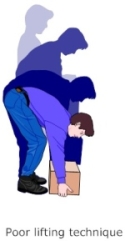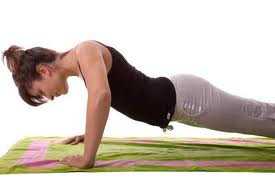This post continues the discussion on how we as physical therapists can best treat our patients’ ailments. Check out the previous post regarding treatment and communication of a patient with knee pain here.
“Well, the reason for your low back pain is that you have degenerative disc disease.”
or,
“You have a slipped disc at L4/L5 which is compressing a nerve.”
or,
“the arthritis in your back is equivalent to a 90 year old.”
Pretty scary huh? How can physical therapy help with diagnoses like these? Can physical therapy remove the arthritis found on imaging?
No it cannot. But perhaps there are more important questions to ask. I would assume that the more meaningful question(s) may be; Can physical therapy eliminate the low back pain I experience when I am walking my kids to school. Can physical therapy allow me to lift items from the floor, and therefore allow me to perform my household duties? Can physical therapy eliminate the discomfort I experience while sitting for prolonged periods at work, and therefore allow me to be more productive? Can physical therapy eliminate the discomfort I have while I play recreational sports so that I can get back to playing basketball?
The answer to these questions is yes. But, look at the disconnect that many patients experience. Originally, they seek out a healthcare professional with a complaint during some type of meaningful activity. Rather than receiving an answer or a long term intervention, the original complaint gets warped into a diagnosis of “degenerative disc disease”, “arthritis”, or “stenosis”. Could it be that what’s causing the discomfort is not the diagnosis, but rather faulty movement?
Why do we rely on imaging to dictate the cause of our discomforts? Look at this research article performed on individuals without low back pain. This study utilized MRI images on individuals without low back pain. Only 36 percent of individuals without low back pain had “normal” findings. 52 percent had a disc bulge, and 27 percent had a disc protrusion. This, once again, begs the question, could it be that what’s causing the discomfort is not the diagnosis, but rather faulty movement?
This is actually great news for individuals suffering from low back pain. Nobody can treat a diagnosis of stenosis or arthritis. But a movement expert can assess and implement a program to help individuals who have pain with specific activities. Treatment begins with identifying faulty movement, understanding the reasons for the poor movement, and specific corrective exercises to eliminate the poor mechanics.
For example, take a look at this diagram;
No diagnosis is causing this discomfort. Poor movement places a high amount of stress on the joint, the disc, the muscles, everything. Change the movement, change the pain.
That being said, sometimes the desired activity requires more strength and flexibility than an individual has.
This individual likely does not have the core strength to lift appropriately given this quick movement screen. In order to lift appropriately, she may require a strengthening regimen. Every body is different and requires an individualized assessment and program prescription. In order to get here, push your diagnosis to the side and begin identification of movements which may cause the discomfort.
Optimal Movement Physical Therapy is dedicated to helping individuals identify and treat their movement faults. Visit our website or e-mail us at alan@optimalmovementpt.com so that we may help answer any questions.










